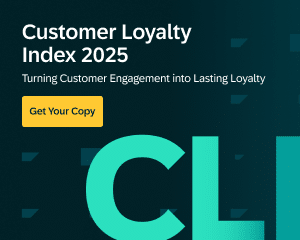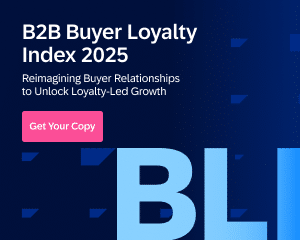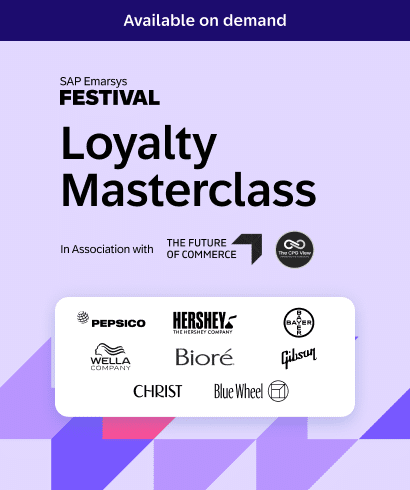Remember when “Hello <First Name>” was considered advanced personalization? Today, your customer expects the right product, price, and message instantly, whether they open an email, scroll a feed, or walk into a store.
Meeting that expectation at scale with manual segmentation and guess-and-check campaigns is impossible, especially if your budgets and team bandwidth are tighter than ever.
That’s why marketing leaders are leaning on AI-driven automation to turn mountains of first-party data into real-time, one-to-one engagement. And the shift is happening fast.
In this article, we’ll unpack how forward-thinking marketers combine unified data, predictive intelligence, and automated content creation to deliver seamless experiences that customers notice and competitors scramble to match.
Meet Growing Expectations with AI-Powered Personalization
Customers expect every brand interaction to feel personal, timely, and relevant. Delivering on that promise takes more than data; it takes the ability to act on insights in real time.
AI closes the gap between insight and execution by helping you:
- Unify data into a single, actionable customer view.
- Automate personalization across every touchpoint.
- Predict behaviors and preferences before they happen.
- Optimize content, timing, and channel with surgical precision.
With this level of automation, brands can deliver 1-to-1 experiences to millions quickly and at scale. Yet the stakes keep rising. According to our 2025 Global Consumer Products Engagement Report:
- 65% of consumer-products marketers say customer behavior is getting harder to predict.
- 69% admit that engaging meaningfully with customers is more challenging than ever.
- 76% of marketers believe AI will be essential for attracting new customers.
However, only 10% of consumers say they explicitly want brands to use AI for more personal interactions. That hesitation often reflects a simple knowledge gap; most shoppers don’t realize that, behind the scenes, AI powers the friction-free experiences they already enjoy.
The takeaway? AI-driven personalization is the engine that makes seamless, at-scale engagement possible, even if customers aren’t thinking about the technology itself.

Strategies to Scale Personalization with Confidence
To scale 1:1 personalization, embed AI into every layer of your strategy. The following methods show how successful marketers deliver relevant, repeatable, and revenue-generating personalization.
1. Orchestrate omnichannel journeys with unified data
When customer data lives in separate systems, campaigns feel disjointed and relevance suffers. Unifying data means your email, SMS, web, and in-store messaging all “know” the same customer preferences and can automatically hand the conversation from one channel to the next.
Goal: Deliver consistent, contextually relevant messaging across every channel to boost engagement and reduce the manual work of piecing journeys together.
How it works: AI-powered platforms unify customer identity, preferences, and behaviors across email, mobile, web, social, POS, and more. This enables marketers to build journeys that adapt in real-time. Personalization isn’t applied at the end — it’s baked into the journey design.
AI-driven tactics:
- Use identity stitching to consolidate customer records across channels.
- Create channel-aware segments that adjust based on device or interaction type.
- Automate channel switching (e.g., move from email to SMS when engagement drops).
- Set real-time triggers based on behavioral events (cart abandonment, browse activity).
The SAP Emarsys omnichannel marketing platform supports a breadth of both native channels and an extensible ecosystem of best-in-class partner integrations that unlock additional revenue streams, scalability, and innovation.
Example: A beauty retailer feeds in-store POS data into SAP Emarsys. When a shopper buys a moisturiser at checkout, the platform instantly suppresses moisturiser promos in the next email and instead highlights complementary products online, creating a seamless, non-redundant experience.
2. Accelerate content creation and reuse with generative AI
Creative bottlenecks are a significant barrier to scaling personalization. Generative AI turns a brief into dozens of on-brand subject lines, hero images, or copy variants in seconds. That frees content teams to focus on big ideas while the AI handles volume, ensuring every segment sees something that feels hand-crafted.
Goal: Deliver high-quality, personalized content at scale, without burning out creative teams
How it works: Generative AI tools create and customize messaging assets, subject lines, visuals, and CTAs based on brand tone and customer data. Marketers can generate content variations, save high-performing blocks, and reuse them across campaigns and channels.
AI-driven tactics:
- Use subject line and preheader generators to test high-performing variants.
- Generate on-brand product descriptions or offer copy at scale.
- Save content blocks for reuse across different campaigns or regions.
- Personalize content blocks by segment (e.g., VIP vs. first-time buyer messaging).
- Automate localization by generating content in different languages based on the region.
Example: A global apparel brand uses SAP Emarsys’ GenAI capabilities to spin one campaign concept into 15 language-specific versions overnight, then A/B-tests subject lines to surface the top performer before the full send.
3. Deploy predictive intelligence to anticipate customer needs
Reacting to yesterday’s clicks is too slow. Predictive scores tell you who will buy (or leave) tomorrow, so you can nudge them first. That means marketing dollars go to the customers most likely to convert, and high-value shoppers feel understood.
Goal: Personalize experiences based on what customers are likely to do next, not just what they’ve done
How it works: Predictive AI uses machine learning to analyze customer behaviors and forecast outcomes, such as likelihood to purchase, churn, or respond to specific channels or products. These insights feed directly into automation flows.
AI-driven tactics:
- Use churn risk scoring to trigger re-engagement programs
- Target likely-to-purchase segments with conversion-focused incentives
- Suppress disengaged customers from paid ads to reduce waste
- Segment audiences by predicted next-best action
- Combine predictive scores with dynamic content to fine-tune messaging
Example: An online pet supply company uses SAP Emarsys’ predictive analytics to identify customers likely to reorder within the next 7 days. These customers are automatically entered into a replenishment program offering 10% off with free shipping, while those with high churn risk receive a personalized survey and loyalty points offer.
4. Activate AI-optimized lifecycle journeys with Tactics
Building complex automations from scratch can stall programs for weeks. Pre-built, AI-powered tactics let teams launch proven journeys in minutes, then tweak as needed, turning best-practice theory into live revenue.
Goal: Scale complex marketing journeys quickly, without custom development.
How it works: SAP Emarsys’ AI-powered Tactics are prebuilt lifecycle automations designed around industry best practices. Marketers select a goal (e.g., increase repeat purchases), choose relevant channels, and launch a fully optimized journey in minutes.
AI-driven tactics:
- Launch prebuilt Tactics like “Convert Active Buyers” or “Reactivate Lapsed Customers.”
- Customize tactics by brand, market, or season
- Use asset tagging to manage content across large teams
- Combine Tactics with predictive segments for maximum impact
- Monitor performance with Strategic Dashboards
Example: A global wellness brand wants to boost first-to-second purchase conversion. They launch the “Convert Active Buyers” tactic, customizing it for their loyalty tier. The program uses AI segments, personalized offers, and product recommendations to convert customers within 14 days post-purchase.
5. Personalize at scale with AI-driven product recommendations
Manual merchandising can’t keep up with every customer’s browsing path. AI recommendations automatically surface the perfect product for each individual, driving larger baskets and cutting the guess-and-check workload for e-commerce teams.
Goal: Increase relevance and conversion through dynamically personalized product content
How it works: AI surfaces the most relevant products for each customer based on behavioral data, affinities, and purchase history. These recommendations are injected into email, web, or mobile content blocks automatically.
AI-driven tactics:
- Show recently browsed, top sellers, or “frequently bought together” items
- Adjust recommendations based on inventory availability
- Customize logic by channel (e.g., retargeting for abandoned products in email vs. homepage)
- Use category affinity to personalize offers (e.g., “Running Shoes” vs. “Lifestyle Sneakers”)
- A/B test recommendation types to refine model accuracy
You can personalize entire journeys using SAP Emarsys. Our personalization engine increases engagement and conversion by delivering sophisticated, personalized campaigns across channels.
Example: A footwear brand uses SAP Emarsys Personalization Engine to display dynamic product suggestions in cart abandonment emails. Customers who viewed high-margin styles receive curated outfits that include those shoes, while others see “Complete the Look” bundles. Product content updates in real time based on stock levels.
6. Refine strategies using audience reporting and AI insights
Personalization isn’t “set it and forget it.” Real-time audience dashboards reveal which segments, messages, or channels generate the most revenue so you can double down fast and defend your budget with complex numbers.
Goal: Continuously improve personalization through data-backed decisions.
How it works: Audience reporting allows marketers to measure engagement, revenue, and conversion performance across AI-generated segments. Real-time insights make adapting strategies and optimizing campaigns easier across lifecycle stages.
AI-driven tactics:
- Compare performance by lifecycle segment (e.g., New vs. Lapsed)
- Track channel-specific engagement (email vs. SMS vs. app)
- Use segment health scores to identify opportunities
- Feed reporting insights back into segment logic or content strategy
- Build C-level dashboards to visualize personalization ROI
Example: A fashion retailer uses audience reporting to evaluate its win-back campaigns. It discovers that lapsed VIP customers respond better to exclusive event invites than discount codes. Based on this insight, the team updates content across the tactic to emphasize access and brand prestige.
Real-World Wins: Brands Putting AI-Powered Personalization to Work
Witnessing AI-driven marketing strategies in action provides invaluable insights into their effectiveness. Leading brands utilize first-party data and dynamic value exchanges to elevate personalization throughout the customer journey.
FASHIONPHILE: Strategic personalization with predictive customer insights

Overview: FASHIONPHILE is a luxury resale brand specializing in high-end designer goods from Chanel, Hermès, and Louis Vuitton. As a digitally native brand in a niche, fast-growing industry, they’ve made AI central to performance marketing and customer intelligence.
Challenge: The brand needed to move beyond basic historical segmentation and adopt a forward-looking approach to personalization, identifying which customers were likely to engage, convert, or churn. Traditional lifetime value models offered limited insight into future behavior, and scale was a growing concern.
Solution: FASHIONPHILE deployed predictive customer lifetime value (CLV) modeling using SAP Emarsys AI help.
By applying deep learning to 20+ years of transactional data, they could forecast future value on a customer-by-customer basis. This informed more intelligent segmentation, campaign targeting, and prioritization of high-value leads.
Now Optics: Automating content at scale for higher customer engagement

Overview: Now Optics is a U.S.-based optical retailer offering telehealth eye exams, glasses, and contact lenses. With a hybrid digital/physical model, the brand needed to deliver relevant, channel-specific content to diverse audiences at scale.
Challenge: The marketing team was pressured to personalize emails and SMS messages without overburdening the creative team. Manual processes limited the speed and scope of content variation, while consumer expectations for tailored communication continued to grow.
Solution: With the help of SAP Emarsys, Now Optics has adopted AI-powered segmentation and dynamic content generation. By combining behavioral insights with real-time data, the brand was able to deliver unique messaging per customer across email and SMS. AI was also used for send-time optimization, ensuring messages reached each recipient at their optimal engagement window.
With AI handling repetitive and tactical tasks like subject lines, product suggestions, and automation setup, Now Optics was able to redirect focus toward strategic growth initiatives while improving performance.
- 5–10% lift in open rates
- 0.1–2% increase in click-through rates
- Significantly reduced production workload for creative and CRM teams
From Insight to Impact: Your Next Move
Customers expect every brand touchpoint to feel effortless and uniquely their own. With AI-driven personalization, that expectation becomes an engine for measurable growth rather than a burden on your team.
By unifying data, automating content creation, predicting intent, and activating turnkey lifecycle journeys, you can move from reactive campaigns to always-on, always-relevant engagement.
Ready to join them? Discover how SAP Emarsys makes true 1:1 personalization both scalable and sustainable. Get a demo now and see how quickly you can turn AI-powered possibilities into real-world performance.







